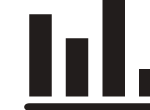
Industrial designer of vehicles
Other denominations
Automobile designer
Description
Industrial designers specialising in transport are in charge of designing and technically developing products related to the transport of people or goods. Particularly, in the automotive industry, projects are generally so complex that tasks tend to be subdivided for the design of exteriors, interiors and finishes. The design of cars, motorbikes, buses and coaches, trains, bicycles or parts of these vehicles is done from large-volume sectors and using technology that is so specific that specialised designers are needed. They must have an in-depth knowledge of constructive systems, materials, aerodynamics, ergonomics and comfort, environment and sustainability and other aspects specific to the sector.
Tasks
- Analysis of the project, company and market.
Before initiating the project, the designer analyses the briefing or document that specifies the design objectives, product positioning, the client company, users and, lastly, the most direct competition.
In this sector, transport, the designer may develop one component of the vehicle or the entire vehicle. Owing to the fact that investments in these products are very high, often the project to be made centres on how to partially modify, improve or create product versions to lengthen its life cycle and thus make the investments already made profitable.
The designer must know about trends well and study the latest innovations related to product sector in which he or she is working.
If the information provided by the company in the briefing is enough and the objectives are very clear, the designer moves onto the preliminary design phase. Conversely, if it is not clear, the designer, jointly with the external company or consultants, can perform studies prior to the draft project that lead to an environment with greater innovation, studies of trends, technologies, user-friendliness, ergonomics, usage habits, etc. - Preliminary plan to design or prepare the first hypotheses.
The designer presents different design proposals, usually for concept and shape, with an idea of materials and finishes and initial concepts, if the project thus requires.
After selecting the conceptual proposal, the designer develops it in a second phase of the preliminary project, going into greater detail. Materials that will be used for the presentation will primarily be illustrations, 3D renderings and delimited plans with general measurements. - Design project.
After the final idea is selected and approved, the designer makes any possible retouches and executes the technical project.
In this phase, the materials that are normally turned in are detail and overall plans, a technical constructive report and volume mockups, if necessary. These mockups are normally done by a designer specialising in these types of products.
Monitoring of the project industrialisation. Supervise the industrialisation, resolving and executing any possible changes that may be required.













